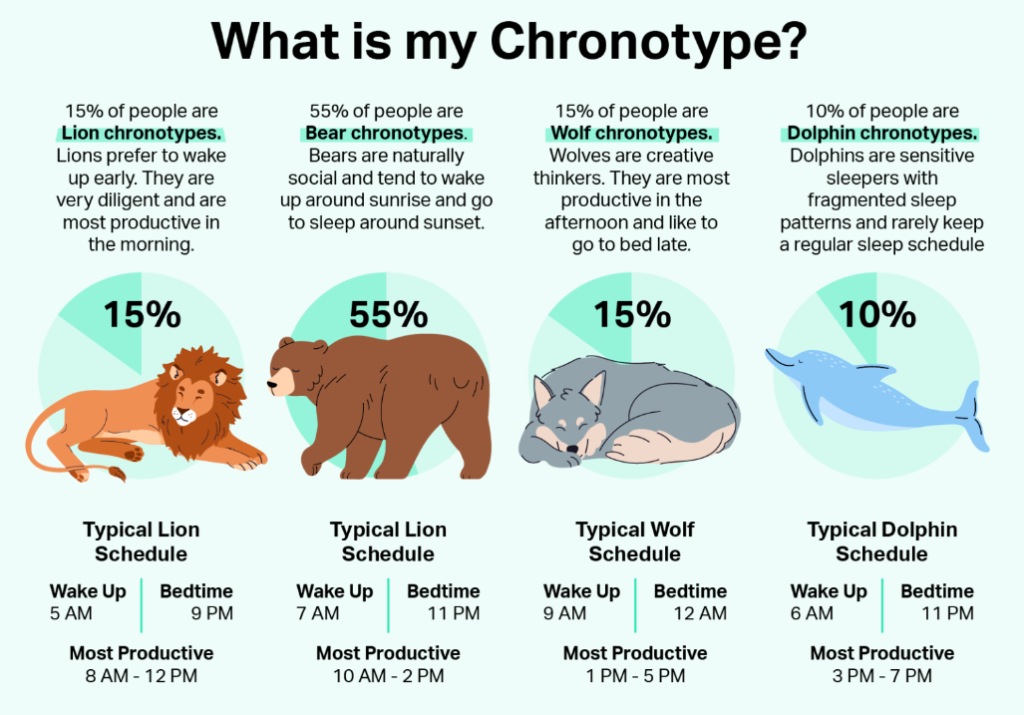
With a general need for seven hours of quality sleep for adults, routine combined with consistency is key. Without a consistent schedule, the circadian rhythm is constantly working against your body and mind creating issues for your family, your work, and your health.
A recent study in Sleep Education updated the hours needed from birth to adulthood to help families create healthy, consistent schedules centered around sleep.
- Infants (4 to 12 months) should sleep 12 to 16 hours per 24 hours
- Children (1 to 2 years) should sleep 11 to 14 hours per 24 hours
- Children (3 to 5 years) should sleep 10 to 13 hours per 24 hours
- Children (6 to 12 years) should sleep 9 to 12 hours per 24 hours
- Teenagers (13 to 18 years) should sleep 8 to 10 hours per 24 hours
- Adults should sleep 7 or more hours per night
Although these are average sleep recommendations, without some wiggle room over the minimum amount, poor sleep quality will compound each night. “By creating habits and cues that promote sleep, it becomes easier to fall asleep quickly and stay asleep through the night. With more repetition, the routine gets reinforced, facilitating increasingly stable sleep patterns over time.”
Circadian Rhythms and Temperature
The circadian rhythm, or your body’s internal clock, is at a lower level of alertness around the afternoon hours. “Our body contains a circadian clock, which helps to keep time for many biological functions,” said Andrew Phillips, associate professor of medicine at Harvard Medical School. “One of the key markers of the circadian clock is melatonin. Usually, at nighttime, our circadian clock sends a signal that tells us to release melatonin overnight.”
Circadian phase delay occurs when your sleep pattern is delayed two hours or more from a conventional sleep pattern, causing you to go to sleep later and wake up later.
Another interesting factor during the day that differs from night is how retinas perceive natural light. The circadian clock receives a signal when it is brighter that you should be awake. Normal body temperatures of 98.6 Fahrenheit remain due to the cortisol your body produces in this natural rhythm.
“In preparation for sleep at night, the body pushes heat to the extremities. Blood vessels on the skin become larger in order to release heat. These physiological changes work to lower your core body temperature. With that drop in body temperature comes feelings of drowsiness, and eventually, sleep itself.”
Chronotypes and Sleep Schedules
The Sleep Foundation created a helpful infographic to visually show the different chronotypes we fall into at a physiological level to the central nervous system. We all have heard of early birds and night owls. The concept extends further into chronotypes to help categorize one’s motivation and activity.
- Early birds: tend to feel their best early in the day
- Night owls: Brain pathways are most excited in the evening
A night owl may hear they have a chronic form of jet lag living in tension from society’s demands of natural wake-sleep cycles. Early birds are, therefore, at an advantage because they thrive when society demands our presence when it is light and businesses are normally open.
As we pay closer attention to our sleep needs depending on the chronotype schedule we fall into, routines are easier to develop and maintain for yourself and your family.
If you are struggling with getting enough sleep or would like some expert advice about the connection with consistency in schedules, connect with a professional sleep specialist at Alaska Sleep Clinic.







